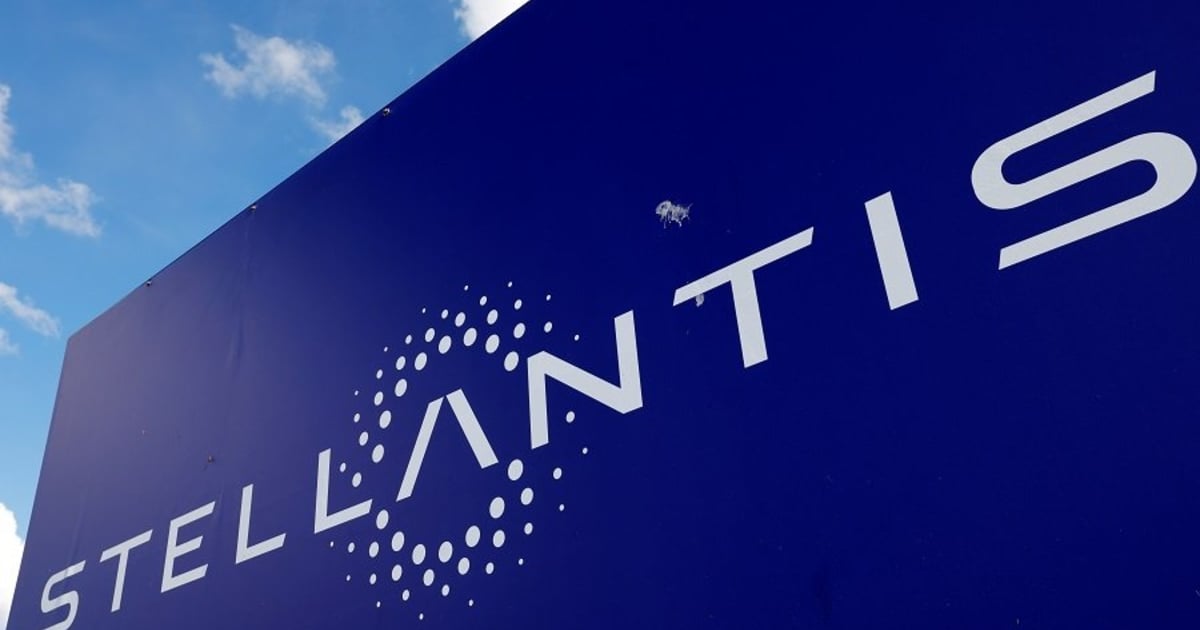
Stellantis, the parent company of the Ram, Jeep, Dodge, Chrysler and Fiat brands, posted robust profit and revenue gains in 2022 along with the largest payout to UAW employees among the Detroit 3 automakers.
The automaker, which doesn’t disclose quarterly results under French financial reporting rules, on Wednesday said net profits for the year surged 26 percent to 16.8 billion euros ($17.9 billion) while global revenue rose 18 percent to 179.6 billion euros ($190.9 billion).
North American results paced the company’s 2022 gains. Stellantis said North American adjusted operating income rose 23 percent to 13.9 billion euros ($14.8 billion). Revenues surged 23 percent to 85.5 billion euros ($90.9 billion). Deliveries rose 2 percent to 1.86 million vehicles.
In the U.S., Stellantis will distribute $14,760 each to eligible UAW-represented workers as part of a profit-sharing plan. About 40,500 workers are eligible for the bonus. The payout is up slightly from 2021, when workers received $14,670 each.
General Motors’ unionized workers will receive a profit-sharing bonus of up to $12,750 based on the company’s North American performance last year, while UAW members at Ford Motor Co. are getting an average of $9,176.
“The financial strength of Stellantis primarily relies on the company’s UAW workforce as evidenced by its financial report,” UAW Vice President Rich Boyer, head of the union’s Stellantis department, said in a statement. “Our members are the backbone of this company. We will continue to call on Stellantis to show our members the respect that is due to them by demanding that they provide a safe working environment to all employees and job security by investing in America.
“While we recognize that this profit sharing amount is rightly deserved, we also know that there is much work to be done.”
Stock buyback
The company also unveiled a share buyback of as much as 1.5 billion euros ($1.6 billion) following Mercedes-Benz and BMW in returning cash to shareholders after strong 2022 results on the back of high vehicle prices and pent-up demand.
Stellantis expects another year of double-digit returns as vehicle price increases slow, chip shortages ease and production picks up, the automaker said Wednesday.
The company’s operating return rose to 13 percent last year, beating analysts’ expectations.
“Price increases were substantial in 2022 and they will be lower in 2023,” CFO Richard Palmer said on a call with reporters. “The challenge for 2023 is to offset inflation with pricing, but also with an improvement in the industrial efficiency.”
The group, formed from the merger of Fiat Chrysler and PSA Group, will pay a dividend of 1.34 euros a share, up from 1.04 euros the previous year. The buyback will run through the end of the year.
Returns during the second half of 2022 declined compared to the first half because of the supply-chain snarls. Operating margin was 12 percent in the second half, down from 14.1 percent in the first six months. Adjusted earnings before interest and tax were 10.95 billion euros in the July to December period.
Industrial free cash flows topped 10.8 billion euros last year.
Stellantis said all of its regions were growing and delivering record profitability, including Europe.
The automaker said on Wednesday that it will distribute a record amount of 2 billion euros to its global employees, 200 million euros more than in 2021.
Bumper cash synergies
Stellantis said it had achieved cash synergies of 7.1 billion euros last year, far exceeding in advance the 5 billion-euro target by 2024 it set at the time of the merger.
“This speaks to the fast conversion and execution of the team within Stellantis organization,” Palmer said.
Results were also helped by good growth in global sales of electric vehicles, pricing power and a positive exchange rate effect linked to a strong U.S. dollar, Palmer said, “despite various challenges in the marketplace, with semiconductors, logistics, raw materials, energy and inflation.”
Increased industrial costs had an overall impact on the group’s results last year of over 9 billion euros.
Vehicle deliveries fell 2 percent last year, mainly due to semiconductors and logistics constraints, especially in Europe.
“Challenges continue in securing capacity for (vehicle) outbound transportation (to customers),” Palmer said. “Semiconductors continue to be a problem, I don’t think the situation will be fully resolved in 2023,” he added.
Automakers are still struggling to source enough parts, with logistics problems adding to the fray to delay deliveries.
Truck driver and train shortages during the second half left thousands of cars stuck around at Stellantis’s Sochaux plant in eastern France, with peer Volkswagen also reporting that disruptions left it with a glut of unsold vehicles.
The difficulties in getting vehicles to car buyers are adding to manufacturers’ already long order books they say will buffer against a slowing global economy.
While price cuts at automakers including Tesla and Ford on EVs do not bode well for the months ahead, Stellantis rival Renault this month said it expects rising returns after overhauling its model offering.
Automotive News staff and Reuters contributed to this report